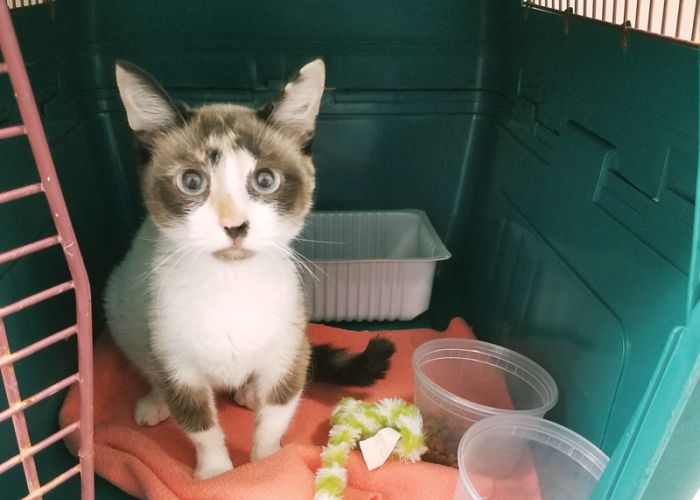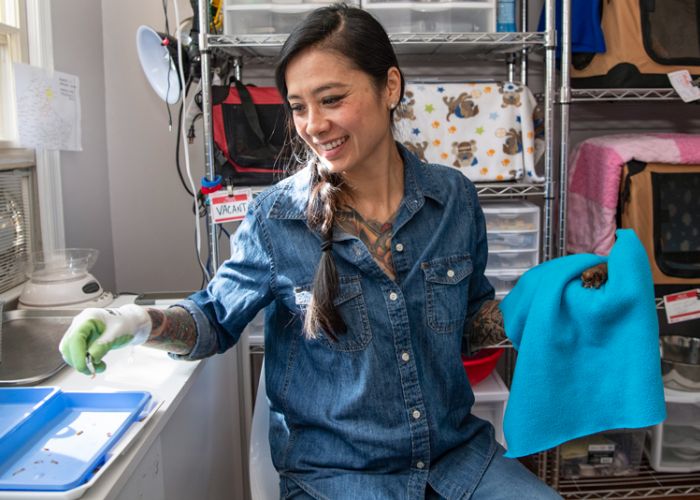Why words matter: ‘Feral’ cats
Inexact word choices can hurt both cats and TNR efforts

“I have five kittens,” begins the email that recently landed in my inbox. “I was told that you would come and get them … they are feral cats but they are tame and are used to people.”
Sound familiar? If you work at a shelter or volunteer with a trap-neuter-return program, you’re likely on the receiving end of similar messages, regular reminders that although our field has long used the word “feral” to describe unsocialized cats, there’s still a lot of confusion surrounding the term.
Part of this we can blame on cats’ propensity to defy easy categorization. “Their level of socialization, it’s not just ‘friendly’ or ‘feral.’ There’s a lot of in between, and they can move across the spectrum and may have different reactions with different people,” says Danielle Bays, senior analyst for cat protection and policy at the Humane Society of the United States.
But the animal welfare field has added to the confusion through our overly broad, and often inappropriate, use of the word, as Bays pointed out in a recent Maddie’s Fund webinar, Language That Harms Cats. In this edited interview, Bays explains why “feral” can be problematic—and why we need to be more precise and more thoughtful when we label cats.

Why does it matter if we describe a cat as feral rather than unsocialized?
If we want to build a positive culture around cats, we need to choose our words appropriately, and sometimes that also means tailoring our language based on our audience. When you’re talking with people who aren’t involved in animal welfare, you need to understand what the terms mean to them.
I recently read a local ordinance that defined a feral cat as one who “exhibits savage or wild behavior.” Many ordinances have similar definitions.
To the general public, the term feral can conjure this idea of cats who are like mountain lions, who may actually attack a human. They don’t always understand that we’re talking about the same domestic cat species, felis catus, as their house cats, but that these cats simply didn’t get socialized to humans at a formative age.
So, when we use the term feral unnecessarily, it can hamper efforts to get community support for trap-neuter-return programs, especially from people who may already have negative images of wild animals.
“Their level of socialization, it’s not just ‘friendly’ or ‘feral.’ There’s a lot of in between, and they can move across the spectrum and may have different reactions with different people.”
—Danielle Bays, The Humane Society of the United States
In the webinar, you also mention that “feral” can be problematic when you’re working with conservationists.
People in the conservation field have a different definition of feral. To them, it means not dependent on people. But the vast majority of what we call feral cats are living close to people and depend on them as a food source. These are the nuances you need to be aware of when you’re talking across stakeholders.

What are some of the ways you see “feral” being misused within the animal welfare community?
When TNR programs really got a hold here in the U.S., they were aimed at cats we think of as feral—that is, unsocialized cats, ones everybody would agree are unadoptable. Over the years, we realized that the cats we’re targeting in our TNR work aren’t all unsocial. They develop relationships with their caregivers, and their level of socialness can change over time. We developed the term “community cats” as an umbrella term to encompass the broad spectrum of socialization we see in outdoor cats.
But many people still apply “feral” to all cats living outdoors. You’ll see people describing how they took in a so-called feral cat who quickly transformed into a cuddly pet, and this perpetuates the myth that all cats can be placed in adoptive homes. You’ll also hear people in our field using the term “friendly feral,” which is a complete oxymoron.
For practical purposes, we often need to describe an individual cat’s level of socialization. How can we do that without using the word “feral”?
First by recognizing that it’s not black or white and that trying to categorize them in one box or another can be challenging. If you’re going to use the term “feral,” use it in the correct context and not interchangeably with “community cat.”
In shelters, labeling a cat as feral can have significant consequences in how that cat is treated when the cat might just be freaked out. Many shelters have high staff turnover and people who enter the job with no previous cat experience. If we label the cats as feral, we’re sending the message that these are wild animals who are dangerous, and now we want you to handle them. It reinforces negative stereotypes about these cats, when we could instead say, “These cats aren’t socialized with people; here are some safe handling techniques.”
How we talk about animals kind of mirrors what we think about them, so if we’re using more positive terms and more precise terms, that will help build more support for cats within our community.








